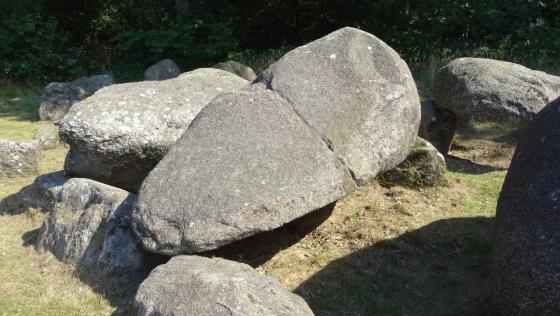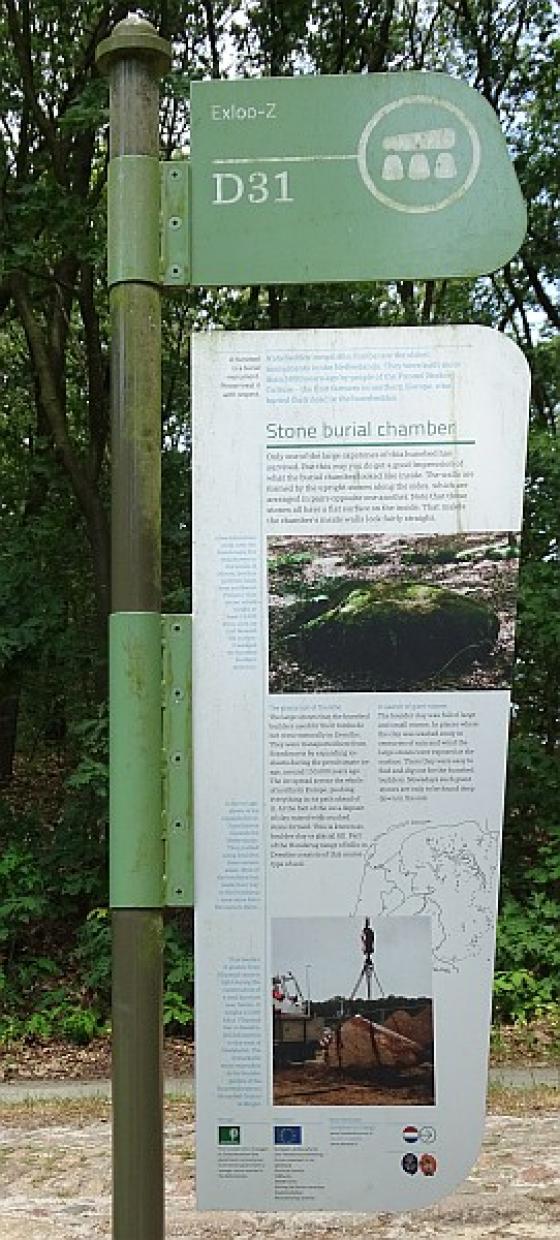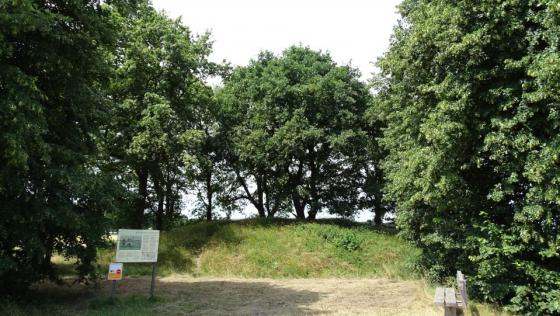Visited: September 15, 2013
Borger Round Barrow, some 2½ metres in height and between 10 and 12 metres wide, sits in a large grassy field to the north of Borger, on Drouwenerstraat. It’s a pleasant walk: just follow Hoofdstraat through Borger and, at the point where most visitors turn right along Hunebeddenstraat to visit the Hunebed Centre, continue straight ahead along Drouwenerstraat. You’ll see the roundel of mature oak trees surrounding the mound of the barrow long before you get there: it’s about half a kilometre farther on from the last houses of the village. On the day of my visit, the oak trees were laden with acorns, while a carpet of fallen acorns crunched under my feet. Unusually, the main vegetation covering the barrow (other than grass) was a large stand of wild raspberry plants.
The notice at the site states:
“This burial mound is the only one remaining of a row of burial mounds between Borger and Drouwen. The other mounds have been levelled over time. Perhaps the heavy and massive pile of stones applied when the mound was raised was its salvation. Based on this stone packing, the mound can be dated to the Bronze Age, and we between 1800 and 1500 BC. The burial mounds in this area were raised along an ancient, north-south route across the Hondsrug. In prehistoric times it was (apparently) customary to bury the dead atAez ten tangs along roads. These roads were no er than simple etpaths or cart tracks”.
The original mounds in this area were raised along an ancient route extending from north to south. In prehistoric times, it was apparently common practice to bury the dead alongside roads.
































































